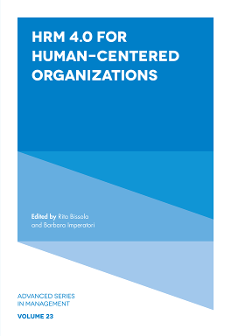
Index
HRM 4.0 For Human-Centered Organizations
ISBN: 978-1-78973-536-9, eISBN: 978-1-78973-535-2
ISSN: 1877-6361
Publication date: 11 November 2019
Citation
(2019), "Index", HRM 4.0 For Human-Centered Organizations (Advanced Series in Management, Vol. 23), Emerald Publishing Limited, Leeds, pp. 241-246. https://doi.org/10.1108/S1877-636120190000023017
Publisher
:Emerald Publishing Limited
Copyright © 2020 Emerald Publishing Limited
INDEX
- Prelims
- Smart Industry or Smart Bubbles? A Critical Analysis of Its Perceived Value
- An Analysis of the Contribution of e-HRM to Sustaining Business Performance
- HR Devolution in the Digital Era: What Should We Expect?
- Lost in Holacracy? The Possible Role of e-HRM in Dealing with the Deconstruction of Hierarchy
- Use of Relational eHRM Tools in Gig Worker Platforms
- The Human–Technology Interface in Talent Management and the Implications for HRM
- Blockchains 2019 in e-HRM: Hit or Hype?
- Building Synergies with HR Analytics Capabilities
- HR Analytics in the Digital Workplace: Exploring the Relationship between Attitudes and Tracked Work Behaviors
- Themes and Trends in Smart Working Research: A Systematic Analysis of Academic Contributions
- Social Media in HRM: A Humanistic Management Perspective
- Exploration of Social Media Capabilities for Recruitment in SMEs: A Multiple Case Study
- Index